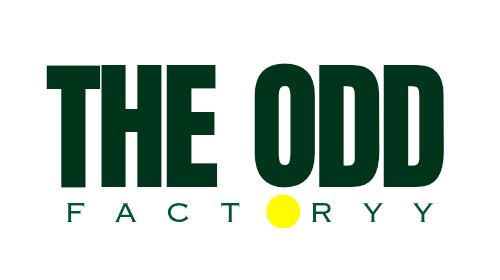What is a Cost/Costing Sheet for Fashion Design?
In the dynamic world of fashion design, a cost or costing sheet is an essential tool that plays a pivotal role in the production process. This document is used by designers, manufacturers, and retailers to calculate the total cost of producing an item. The ODD Factory emphasizes the significance of using a detailed cost sheet to ensure pricing accuracy and maintain profitability. A well-structured garment cost sheet template or fashion cost sheet template can make this process more manageable and transparent.

 Importance in Fashion Design Process
Importance in Fashion Design Process

- Budget Management: The cost sheet helps designers stay within their budget by providing a clear breakdown of all expenses involved in creating a garment.
- Price Determination: By summing up all the costs, designers can determine the final retail price that covers all expenses and ensures a profit margin.
- Informed Decision Making: Designers use cost sheets to compare different materials and production methods, helping them make cost-effective choices.
- Transparency: A detailed cost sheet promotes transparency with clients and stakeholders by outlining every cost involved in the project.
- Efficiency: By using a garment cost sheet template, designers can quickly estimate costs for different designs and sizes, reducing time and increasing productivity.
Our Success
10+
Countries Delivered
50+
Fashion Creators Empowered
12+
Industry Experience
 Components of a Cost/Costing Sheet
Components of a Cost/Costing Sheet

- Material Costs: This includes the cost of all fabrics, trims, and embellishments used in the garment.
- Labor Costs: The expenses related to labor, including wages for tailors, pattern makers, and other staff involved in the garment’s production.
- Overhead Costs: These are the indirect costs, such as utilities, rent, and equipment depreciation, that are allocated to the production.
- Sampling Costs: Costs incurred during the creation of prototypes and samples.
- Transportation and Logistics: Expenses for shipping materials and finished products.
- Markup for Profit: The percentage added to cover profit margins after all costs have been summed up.
Using a fashion cost sheet template ensures that all these components are systematically accounted for in the costing process.
 Importance of Cost/Costing Sheets in Fashion Design
Importance of Cost/Costing Sheets in Fashion Design

- Critical for Pricing Strategy: Cost sheets form the foundation of pricing strategies, ensuring that the product is competitively priced while still profitable.
- Forecasting and Planning: Helps designers forecast future expenses and plan budgets for upcoming collections.
- Negotiation with Suppliers: Detailed cost sheets strengthen the negotiation process with suppliers and manufacturers.
- Inventory Management: Assists in managing inventory by detailing the cost of stored materials and finished goods.
- Quality Control: By reviewing cost sheets, designers can identify areas where they might be overspending and adjust the quality of materials accordingly.
- Enhances Transparency: Cost sheets provide a clear outline of where money is being spent, which is crucial for stakeholders.
- Financial Planning: Aids in forecasting future expenses and planning for upcoming projects.
- Supports Sustainable Practices: Knowing the cost implications of different materials and methods can help in choosing more sustainable options
 Why You Need A Cost Sheet for Fashion Design
Why You Need A Cost Sheet for Fashion Design

- Avoids Underpricing or Overpricing: A well-prepared cost sheet ensures that the product is neither underpriced, which can lead to losses, nor overpriced, which might deter potential buyers.
- Facilitates Scalability: As the brand grows, cost sheets help scale production smoothly by providing clear cost benchmarks.
- Enhances Collaboration: Clear and comprehensive cost sheets make it easier for all team members to understand the cost implications and contribute effectively.
- Improves Supplier Relations: By providing transparent documentation of costs, it fosters trust and reliability with suppliers.
- Optimizes Design Process: Designers can use cost sheets to trial different materials and methods to find the most cost-effective yet quality solution.
- Facilitates Financial Planning: It provides a foundational document for financial projections and budgeting.
- Improves Profit Margins: By meticulously tracking costs, businesses can find areas to reduce expenses and increase profitability.
 Calculation Methods
Calculation Methods

- Cost-Plus Pricing: Calculating total costs and adding a fixed profit margin.
- Break-Even Analysis: Determining the number of units that need to be sold to cover all costs.
- Marginal Costing: Assessing the cost to produce one additional unit.
- Activity-Based Costing (ABC): Allocating overhead costs based on the activities that drive them.
- Standard Costing: Using standard costs for materials and labor to predict total costs.
- Direct Costing: Focusing on direct costs and treating all indirect costs as fixed expenses.
- Absorption Costing: Allocating a portion of all types of costs to each unit produced.
- Variable Costing: Considering only the costs that vary directly with production volume.
 Challenges and Considerations
Challenges and Considerations

- Fluctuating Material Prices: Cost sheets must be updated regularly to reflect changes in material costs.
- Labor Variations: Differences in labor costs due to location or skill level can affect the total cost.
- Overhead Allocation: Properly allocating overhead costs can be complex but is essential for accurate costing.
- Currency Fluctuations: For international brands, changes in currency exchange rates can impact costs significantly.
- Sustainability Costs: Incorporating sustainable practices often increases costs, which needs to be reflected in the cost sheet.
- Technological Changes: Adapting to new production technologies and their impact on costs requires constant updates.
- Compliance and Legal: Ensuring that all costs include compliance with local and international laws is essential.
 Best Practices for Cost/Costing Sheets
Best Practices for Cost/Costing Sheets

- Regular Updates: Keep the cost sheet updated with the latest prices and production methods.
- Detail-Oriented: Include every possible cost to avoid surprises later.
- Stakeholder Involvement: Engage with all stakeholders, including designers, suppliers, and financial teams, to ensure accuracy.
- Use Templates: Utilize a garment cost sheet template or a fashion cost sheet template to standardize the process and ensure consistency.
- Technology Integration: Use software to automate and streamline the creation and updating of cost sheets.
- Sensitivity Analysis: Regularly test how changes in costs affect the overall profitability.
- Training: Ensure all team members understand how to read and use the cost sheets effectively.
- Transparency: Maintain transparency with all parties involved to foster trust and collaboration.
By adhering to these best practices and using tools like the garment cost sheet template, The ODD Factory can ensure that its products are priced correctly and maintain a competitive edge in the fashion industry.
-
Brand Starter Services
Brand Marketing & Growth Consultation
₹2,500.00 Add to cartRated 5.00 out of 5 -
Brand Starter Services
Consultation+ Fabric Samples + Toolkits – Start Up Package
₹3,445.00 Add to cartRated 4.80 out of 5




